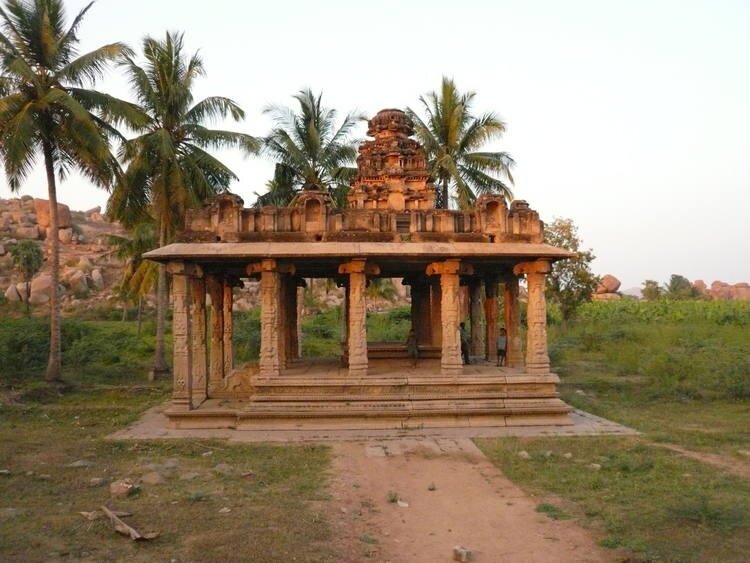Hampi | 25 Feb 2020
Why in News
The Archaeological Survey of India (ASI) is about to install a wooden barricade around the stone chariot inside Vittala Temple complex at the UNESCO World Heritage site of Hampi to protect it from damage.
- The Vittala Temple is among the most-visited and the most photographed protected monuments at Hampi.
Hampi 
- Hampi is the 14th century capital of the Vijayanagar Empire, located in the Tungabhadra basin in Bellary District, Central Karnataka.
- Vittal Temple Complex is the finest example of Vijaynagar Temple Architecture.
- A large number of royal buildings were raised by Krishnadeva Raya (A.D. 1509-30) and Vittal Temple Complex is one of them.
- Temples of Hampi are noted for their large dimensions, florid ornamentation, bold and delicate carvings and stately pillars which include subjects from the Ramayana and the Mahabharata.
- Majority of these temples in Hampi were provided with widespread bazaars flanked on either side by storied Mandapas.
- The Mahanavami Dibba, a variety of ponds and tanks, and the row of pillared Mandapas are some of the important architectural remains of Hampi.
In 1986, Hampi was declared a World Heritage site by UNESCO.
Vijaynagar Empire
- Vijayanagara or “city of victory” was the name of both a city and an empire.
- The empire was founded in the fourteenth century (1336 AD) by Harihara and Bukka of Sangama dynasty. They made Hampi as the capital city.
- It stretched from the river Krishna in the north to the extreme south of the peninsula.
- Vijayanagar Empire was ruled by four important dynasties and they are:
- Sangama
- Saluva
- Tuluva
- Aravidu
- Krishnadevaraya (ruled 1509-29) of the Tuluva dynasty was the most famous ruler of Vijayanagar.
- He is credited with building some fine temples and adding impressive gopurams to many important south Indian temples.
- He composed a work on statecraft in Telugu known as the Amuktamalyada.
